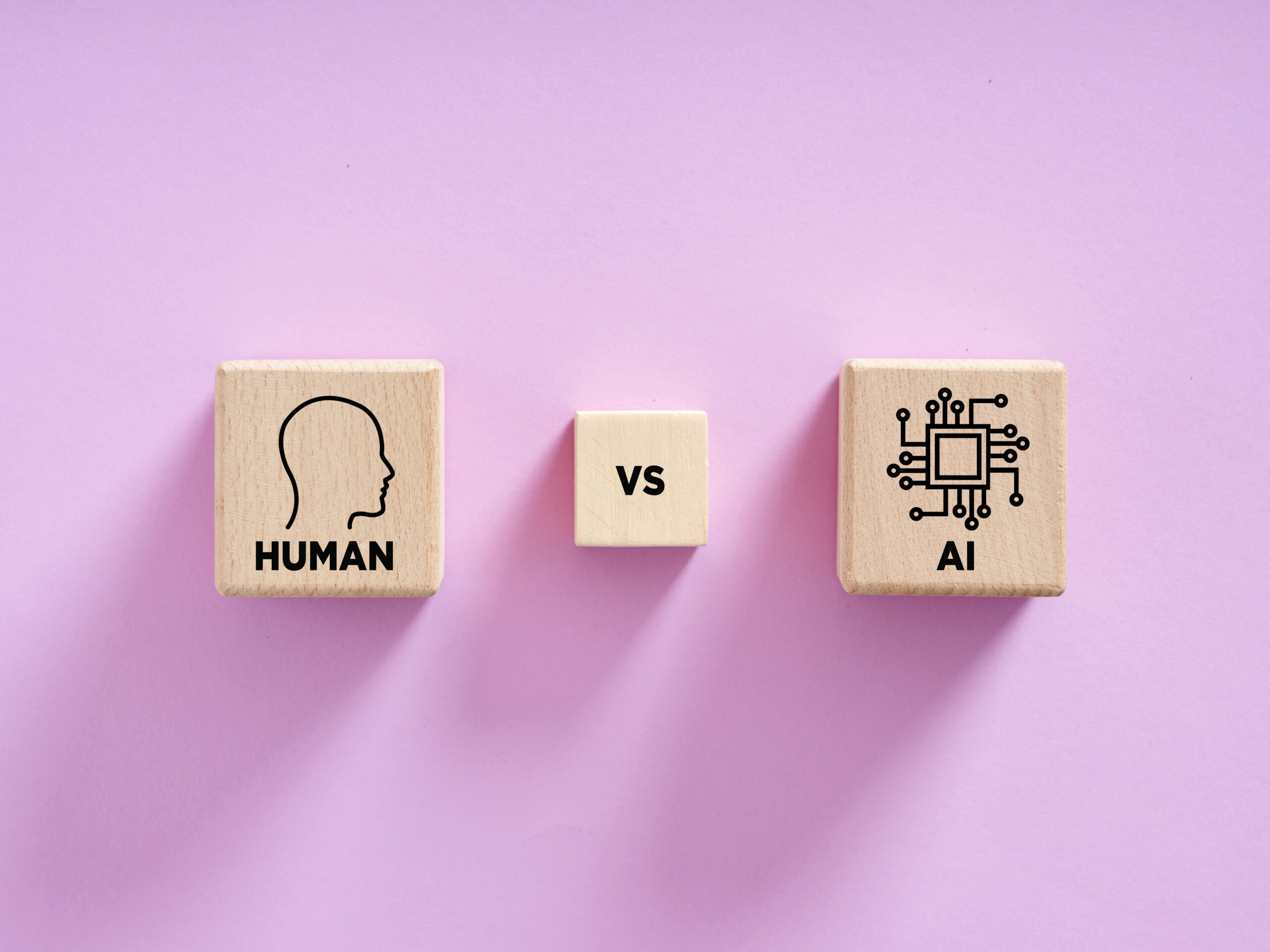Helen Routledge argues the real opportunity with AI isn’t replacing L&D teams but rethinking how we approach our work. By blending AI’s scalability with human insight, learning becomes immersive, realistic, and effective; preparing people for critical moments before they count and delivering performance-driven outcomes that matter to individuals and organisations.
Every few months, a new ‘influencer’ pops up declaring that AI is going to replace trainers, instructional designers, or entire learning departments. It’s a provocative headline and it generates clicks but it’s asking the wrong question. The real conversation isn’t “Will AI replace humans in learning?” It’s: “Where does AI add value – and where does it not?”
We need to stop reacting to hype and start asking better questions.
As learning professionals, we need to stop reacting to hype and start asking better questions. The value of AI in learning is real but it’s not where many people assume. To understand where the real opportunity lies, we need to break down what AI is actually good at, what it’s not, and how we can fuse both to create learning that actually sticks.
What AI can do (better than us)
Let’s start with the obvious: AI is excellent at certain things. It’s lightning-fast, consistent, and incredibly scalable. For repetitive tasks, rapid feedback, and personalised pathways, it outperforms humans every time.
Think about running hundreds of simulations at once, giving instant feedback to thousands of learners, spotting trends across massive datasets or adjusting content in real-time based on user behaviour. These are things that would overwhelm even the most capable L&D team.
When it comes to practice, AI opens up exciting opportunities. It allows learners to rehearse key conversations or scenarios repeatedly, safely, and without requiring a human facilitator every time. That’s not just convenient, it’s transformational.
But let’s not stop there.
What AI can’t do and won’t any time soon
AI can mimic language and emotion, but it can’t truly understand it. It can recognise patterns, but it doesn’t grasp context like a human. And while it can simulate interaction, it doesn’t have intuition, empathy, or lived experience.
There are still critical areas where humans outperform AI, not because of processing power, but because of meaning. Areas such as reading group dynamics and subtle interpersonal cues, coaching through emotional resistance, understanding organisational culture and unspoken norms, or designing nuanced, values-aligned interventions.
This is why human facilitation still matters. It’s not about information delivery, it’s about interpretation, adaptation, and connection.
Why this matters for L&D now
Learners are no longer content with passive, one-size-fits-all content. They want relevance. Engagement. Practice.
And that’s where the real shift is happening. Not from human to AI but from passive knowledge consumption to active skill rehearsal. Because here’s the truth: Knowing what to do isn’t the same as being able to do it. We don’t expect pilots to just know how to fly. They log hours in simulators. We don’t expect athletes to learn the rules and call it a day. They train constantly. So why do we treat crucial soft skills like giving feedback, leading difficult conversations, or handling a tough customer as if reading a slide deck will prepare someone? It won’t.
Simulation is the new classroom
This is where hybrid learning, human design and AI execution becomes so powerful. Emotionally intelligent, AI-powered simulations that let people practise critical conversations in a realistic environment can be a game changer. The simulations adapt. They push back. They trigger emotion. In short, they prepare people for what happens outside the LMS. And because the AI handles the heavy lifting, the repetition, the adaptation, the feedback, human facilitators are freed up to do what they do best: coach, reflect, and support transformation.
The ROI is real
This isn’t just a feel-good idea. It drives measurable outcomes. Teams that practise critical conversations ahead of time make fewer costly mistakes, improve customer satisfaction, reduce workplace tension, build confidence and resilience and perform better under pressure. And when you pair practice with analytics, you gain insight into where support is needed before issues arise. That’s real ROI. Not just engagement but performance.
So where does the real value lie?
It’s not in replacing trainers. It’s not in flashy avatars or AI hype. It’s in creating safe, scalable practice environments that blend the best of both worlds: the consistency and personalisation of AI with the human-centred wisdom of great learning design. Because the future of learning isn’t about knowledge transfer. It’s about building confidence, capability, and competence before the stakes are real. And that’s where human learning and AI truly converge.
Helen Routledge is the CEO of Totem Learning




